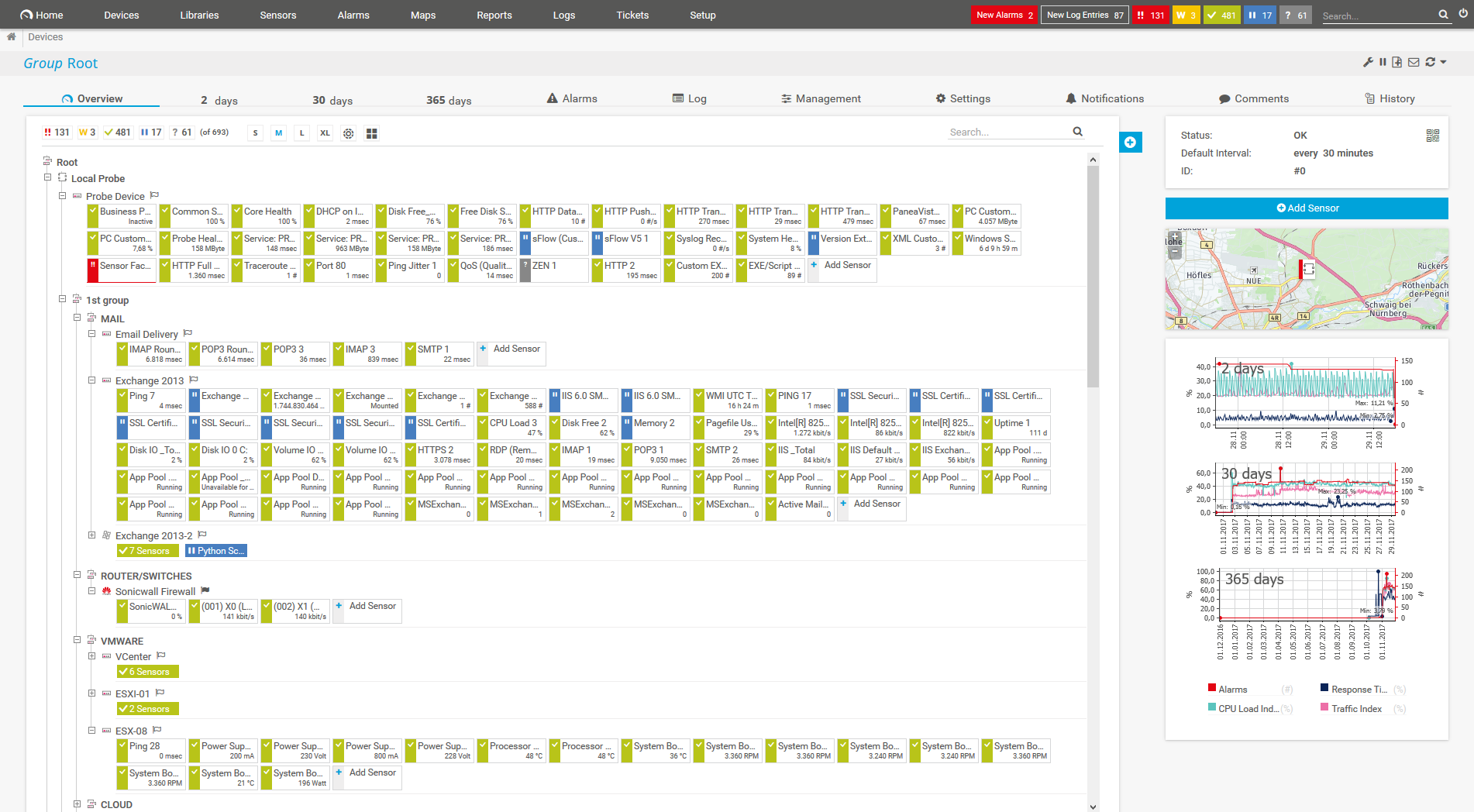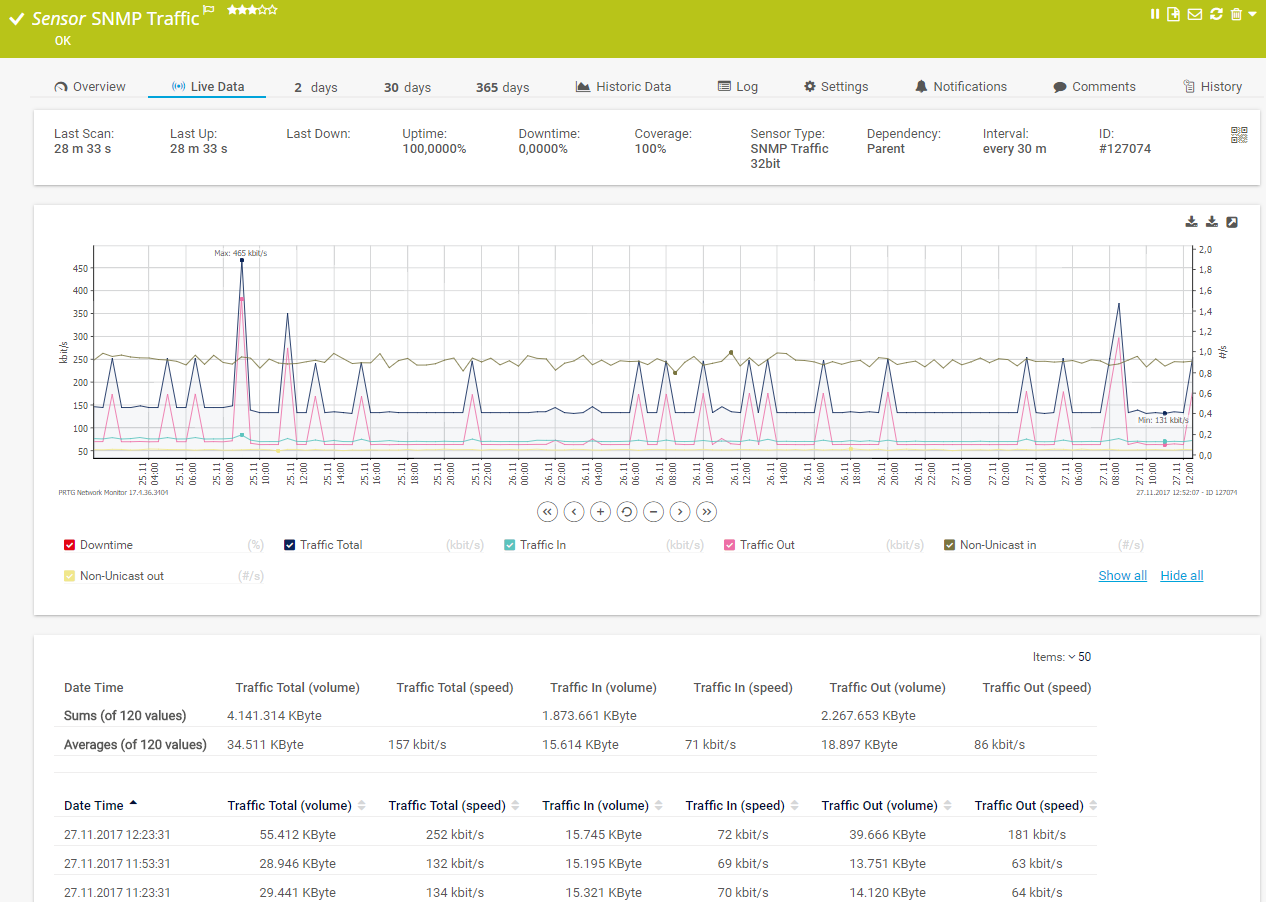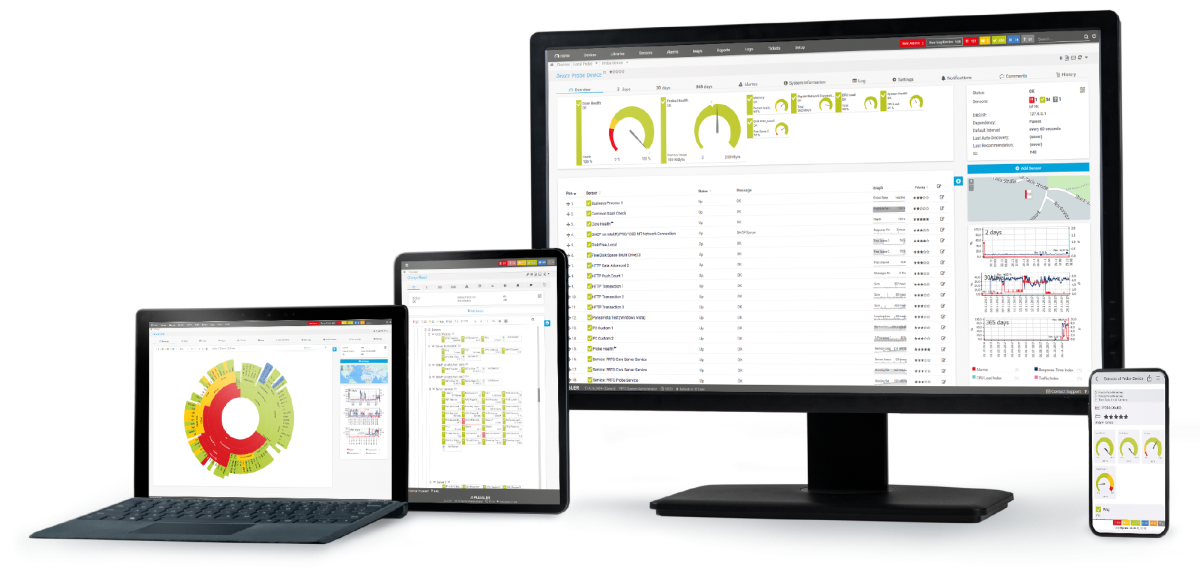Custom alerts and data visualization let you quickly identify and prevent time synchronization issues.
Every minute counts when searching for the cause of a problem in your network. Paessler PRTG NTP monitoring helps you know if any unusual incidents happened at the exact time the problem occurred.
This eliminates ambiguity regarding the classification of errors based on the exact time of their occurrence. You can also generate custom NTP monitoring reports that give you more in-depth insights into the collected NTP data for future optimization.
Accurate time synchronization is essential for consistency across devices in your network. Many systems, including databases, file systems, and distributed applications, rely on precise timestamps.
Inaccurate time can lead to errors, data corruption, or inconsistencies. PRTG NTP monitoring helps you spend less time racking your brain and comparing log files. Its easy-to-read dashboard gives you a 24/7 overview so you can identify the sources of errors and troubleshoot faster.
In distributed systems, particularly those spread across different geographical locations, accurate time synchronization is critical. PRTG NTP monitoring ensures that time synchronization is up and running with the precise timestamp sent by an NTP server.
This way, you can avoid differences between local system times and the NTP server timestamp and prevent issues that could arise from time differences.
Diagnose network issues by continuously tracking the availability, health, and performance of your NTP server. Show response times, time offset, NTP status, CPU load, and other key metrics in real time. Visualize NTP monitoring data in clear graphs and dashboards to identify problems more easily. Gain the overview you need to troubleshoot NTP service and server hardware issues.

Device tree view of the complete monitoring setup

Custom PRTG dashboard for keeping an eye on the entire IT infrastructure

Live traffic data graph in PRTG
A high-precision reference clock, such as a GPS satellite, is the basis of an NTP server’s timestamp.
PRTG’s preconfigured SNTP sensor is one part of the NTP monitoring capabilities you will get. It continuously monitors the response time of an NTP server and also compares the local system times of your network devices with the NTP server’s precise timestamp.
NTP monitoring can show the following metrics:
PRTG comes with more than 250 native sensor types for monitoring your entire on-premises, cloud, and hybrid cloud environment out of the box. Check out some examples below!
See the PRTG Manual for a list of all available sensor types.
Real-time notifications mean faster troubleshooting so that you can act before more serious issues occur.
Set up PRTG in minutes and use it on almost any mobile device.

“Excellent tool for detailed monitoring. Alarms and notifications work greatly. Equipment addition is straight forward and server initial setup is very easy. ...feel safe to purchase it if you intend to monitor a large networking landscape.”
Partnering with innovative IT vendors, Paessler unleashes synergies to create
new and additional benefits for joined customers.
Combining PRTG’s broad monitoring feature set with IP Fabric’s automated network assurance creates a new level of network visibility and reliability.
Siemon and Paessler bring together intelligent building technology and advanced monitoring and make your vision of intelligent buildings and data centers become reality.
UVexplorer integrates tightly with PRTG to bring fast and accurate network discovery, detailed device inventory, and automatic network mapping to the PRTG platform.
Custom alerts and data visualization let you quickly identify and prevent time synchronization issues.
Network Monitoring Software – Version 25.3.110.1313 (August 27, 2025)
Download for Windows and cloud-based version PRTG Hosted Monitor available
English, German, Spanish, French, Portuguese, Dutch, Russian, Japanese, and Simplified Chinese
Network devices, bandwidth, servers, applications, virtual environments, remote systems, IoT, and more
Choose the PRTG Network Monitor subscription that's best for you
The Network Time Protocol (NTP) is a protocol used to synchronize the clocks of computers over a network. It ensures that all participating devices on a network have the correct and consistent time.
The main purpose of NTP is to synchronize the clocks of computers within a network to a reference time source, which is typically highly accurate (like an atomic clock or GPS). This is crucial for time-sensitive applications and processes that require accurate time-stamping.
Use cases for accurate time synchronization include various domains such as financial transactions, logging events, security protocols, and networked systems that rely on distributed operations.
SNTP stands for Simple Network Time Protocol. It is a simplified version of the full Network Time Protocol (NTP), designed for use in situations where the full complexity and accuracy of NTP is not necessary. While both SNTP and NTP serve the same basic purpose – synchronizing clocks across computer systems – they differ in terms of functionality and complexity.
NTP monitoring refers to the process of observing and analyzing the performance and health of Network Time Protocol (NTP) servers and clients within a network. The goal of NTP monitoring is to ensure that all devices are accurately synchronized to the correct time and to identify any potential issues that could affect time synchronization.
Key aspects of NTP monitoring include:
Time synchronization accuracy:
NTP server health:
Stratum levels:
Network latency and jitter:
NTP configuration and security:
Alerts and reporting:
Monitoring your NTP server is crucial for several reasons, all of which revolve around ensuring the reliability, accuracy, security, and overall health of your network's time synchronization system. With NTP monitoring, you can:
No. Paessler PRTG is a comprehensive network monitoring tool that keeps an eye on your NTP monitoring as well as your entire IT infrastructure using common technologies such as SNMP, WMI, SSH, ping, packet sniffing, and flow protocols. It comes as a Windows-based on-premises or a cloud-based SaaS solution. With its brand-new multi-platform probe, you can even run PRTG on Linux and other Unix-based systems.
In PRTG, “sensors” are the basic monitoring elements. One sensor usually monitors one measured value in your network, for example the traffic of a switch port, the CPU load of a server, or the free space on a disk drive. On average, you need about 5-10 sensors per device or one sensor per switch port.
Paessler conducted trials in over 600 IT departments worldwide to tune its network monitoring software closer to the needs of sysadmins. The result of the survey: over 95% of the participants would recommend PRTG – or already have.
Paessler PRTG is used by companies of all sizes. Sysadmins love PRTG because it makes their job a whole lot easier.
Bandwidth, servers, virtual environments, websites, VoIP services – PRTG keeps an eye on your entire network.
Everyone has different monitoring needs. That’s why we let you try PRTG for free.